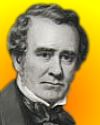
On 2 Jun 1891, John Hawkshaw died, an English civil engineer noted for his work on the Charing Cross and Cannon Street railways among many other projects.
Read this Obituary for John Hawkshaw in the Engineering News (1891), to find out about the many types of projects in which he was involved in his lifetime. The article outlines how he is a fine example of a highly productive Victorian engineer.

On 2 Jun 1903, Robert Morris Page was born, the American physicist who invented the technology for pulse radar. Today's book pick is: Origin of Radar: An Epic of Modern Technology, by Robert Morris Page, who tells the full story of the discovery and development of radar, the most valuable weapon of World War II. He starts with the accidental discovery of radar when in 1922 A.H. Taylor and L.C. Young noticed that ships on the Anacosta River interrupted radio transmission and follows the development of pulse radar to its present applications in navigation, weather forecasting, astronomy and other technical fields. Woven into the story is a clear explanation of radar equipment and the physical principles involved.
It is available from Amazon, typically about Used from $3.99. (As of earlier time of writing - subject to change.)
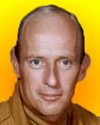 | Whoopie! Man, that may have been a small one for Neil but that’s a long one for me. (Commenting as the third man to step on the lunar surface, though of smaller stature, 5' 6", than Neil Armstrong.) |
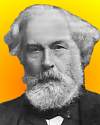 | We profess to teach the principles and practice of medicine, or, in other words, the science and art of medicine. Science is knowledge reduced to principles; art is knowledge reduced to practice. The knowing and doing, however, are distinct. ... Your knowledge, therefore, is useless unless you cultivate the art of healing. Unfortunately, the scientific man very often has the least amount of art, and he is totally unsuccessful in practice; and, on the other hand, there may be much art based on an infinitesimal amount of knowledge, and yet it is sufficient to make its cultivator eminent. |
| Before you look at today's web page, see if you can answer some of these questions about the events that happened on this day. Some of the names are very familiar. Others will likely stump you. Tickle your curiosity with these questions, then check your answers on today's web page. | |
| Births | |
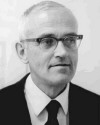 | Clair Cameron Patterson, born 2 June 1922, was a U.S. geochemist who in 1953 made the first precise measurement of the Earth's age, 4.55 billion years. He pioneered in various areas of geochemical research. One major accomplishment was providing the first reliable age of terrestrial and meteoritic materials. His results came from analysis of the isotopic compositions and concentrations of a certain element in the rock samples. What was the particular element? |
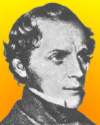 | Nils Gabriel Sefström, born 2 June 1787, was a Swedish chemist who discovered a new element. He examined iron ore after a mine manager had pointed out an interesting test. He was told, if a batch of was treated with hydrochloric acid and a black powder appeared, then the iron would be brittle. By further study he found this was not always true, for sometimes a black powder appeared from iron that was not brittle (1831). By analysis of the powder, although similar to chromium or uranium, he determined it was a new element. Sefström named it after a Norse goddess. Can you name this element? Deaths |
| Deaths | |
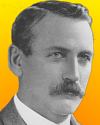 | John Frank Stevens (1853-1943) was an American civil engineer and railroad executive who, as chief engineer of one of the nation’s biggest ever construction projects. Working 1905 to 1907, he laid the basis for that project’s successful completion. The fundamental problem that he faced was one of restoring confidence and morale. A yellow fever epidemic, followed by the unexpected resignation of the first Chief Engineer, John F. Wallace, had made left project in a state of chaos. He found no order, no plan on the job. He planned the main features, turned the project around, and left it destined for successful completion. What project did he rescue from chaos? |
| Events | |
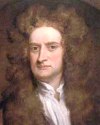 | On 2 Jun 1686, the publication of one of the great books in science was arranged in London at the Royal Society. The minutes of the meeting record that to publish this work of a famous scientist, the astronomer Edmund Halley would “undertake the business of looking after it and printing it at his own charge.” What book by what scientist was to be published? |
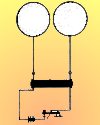 | On 2 June of a certain year, the first radio patent was issued to Guglielmo Marconi in England for his wireless telegraphy apparatus for “Improvements in Transmitting Electrical Impulses and Signals, and in Apparatus Therefor.” In what decade was it issued? |
 | On 2 Jun 1875, Alexander Bell and his assistant had been working on the “harmonic telegraph.” In the transmitter room, his assistant had been trying to free a reed that had been too tightly wound to the pole of its electromagnet, when it produced a twang. Bell, who had been working in the receiving room heard the twang. He realized that now his dream of speech transmission must be a possibility, for the complex overtones and timbre of the twang were of the nature of speech also. Can you name this assistant? |
Fast answers for the previous newsletter for June 1: jet aircraft engine • an engine driven by steam provided by a boiler burning gasoline or kerosene • hovercraft • heart • 3 kelvin (3 K) • Thomas Edison • Antoine Lavoisier.
 If you enjoy this newsletter, the website, or wish to offer encouragement or ideas, please send feedback by using your mail reader Reply button.
If you enjoy this newsletter, the website, or wish to offer encouragement or ideas, please send feedback by using your mail reader Reply button. Your click on a Facebook, StumbleUpon, or other social button on the site webpages is also a welcome sign of appreciation. Thank you for using them.
© This newsletter is copyright 2020 by todayinsci.com. Please respect the Webmaster's wishes and do not put copies online of the Newsletter — or any Today in Science History webpage. (If you already have done so, please remove them. Thank you.) Offline use in education is encouraged such as a printout on a bulletin board, or projected for classroom viewing. Online, descriptive links to our pages are welcomed, as these will provide a reader with the most recent revisions, additions and/or corrections of a webpage. For any other copyright questions, please contact the Webmaster by using your mail reader Reply button.
--
If you do not want to receive any more newsletters, Unsubscribe
To update your preferences and to unsubscribe visit this link
Executive Real Estate Business Class
-
"It was like a man with wings. It wasn't like anything you'd see on TV or in a monster movie." ...
About the publisher
Search This Blog
Blog Archive
-
▼
2021
(585)
-
▼
June
(64)
- On This Day for June 30 - Night of the Long Knives...
- Newsletter for Wednesday 30 June.
- On This Day for June 29 - London's Globe Theatre d...
- Newsletter for Tuesday 29 June.
- On This Day for June 28 - Assassination of Archduk...
- Newsletter for Monday 28 June.
- On This Day for June 27 - Yen made official moneta...
- Newsletter for Sunday 27 June.
- On This Day for June 26 - Opening of CN Tower, Bab...
- Newsletter for Saturday 26 June.
- On This Day for June 25 - Korean War begun, Antoni...
- Newsletter for Friday 25 June.
- On This Day for June 24 - Russia invaded by Napole...
- Newsletter for Thursday 24 June.
- On This Day for June 23 - Battle of Bannockburn, C...
- Newsletter for Wednesday 23 June.
- On This Day for June 22 - Mutiny against Henry Hud...
- Newsletter for Tuesday 22 June.
- On This Day for June 21 - Japanese forces defeated...
- Newsletter for Monday 21 June.
- On This Day for June 20 - Casket Letters found, Ho...
- Newsletter for Sunday 20 June.
- Tonight at 8/7c: Watch ‘Fight the Power’
- On This Day for June 19 - Rosenbergs executed for ...
- Newsletter for Saturday 19 June.
- On This Day for June 18 - War of 1812 begun, Sir P...
- Newsletter for Friday 18 June.
- On This Day for June 17 - Arrest of O.J. Simpson, ...
- Newsletter for Thursday 17 June.
- On This Day for June 16 - First woman in space, Jo...
- Newsletter for Wednesday 16 June.
- On This Day for June 15 - Magna Carta sealed by Ki...
- Newsletter for Tuesday 15 June.
- On This Day for June 14 - First prisoners at Ausch...
- Newsletter for Monday 14 June.
- On This Day for June 13 - Historic meeting between...
- Newsletter for Sunday 13 June.
- On This Day for June 12 - Election of Boris Yeltsi...
- Newsletter for Saturday 12 June.
- Listen Now! Blindspot: Tulsa Burning Podcast
- On This Day for June 11 - Oklahoma City bomber exe...
- Newsletter for Friday 11 June.
- On This Day for June 10 - First “witch” hanged in ...
- Newsletter for Thursday 10 June.
- On This Day for June 9 - Landslide reelection vict...
- Newsletter for Wednesday 9 June.
- On This Day for June 8 - Michelangelo's David inst...
- Newsletter for Tuesday 8 June.
- Action required: Update your HistoryExtra password
- On This Day for June 7 - Lateran Treaty ratified, ...
- Newsletter for Monday 7 June.
- On This Day for June 6 - Normandy Invasion begun, ...
- Newsletter for Sunday 6 June.
- On This Day for June 5 - Start of the Six-Day War,...
- Newsletter for Saturday 5 June.
- On This Day for June 4 - Dunkirk evacuation ended,...
- Newsletter for Friday 4 June.
- Tonight: ‘Alone’ Returns at 9:30/8:30c
- On This Day for June 3 - Pro-democracy protest in ...
- Newsletter for Thursday 3 June.
- On This Day for June 2 - Elizabeth II crowned quee...
- Newsletter for Wednesday 2 June.
- On This Day for June 1 - Debut of CNN, Morgan Free...
- Newsletter for Tuesday 1 June.
-
▼
June
(64)
-
Blogroll
-
About
HistoryFact










0 comments:
Post a Comment